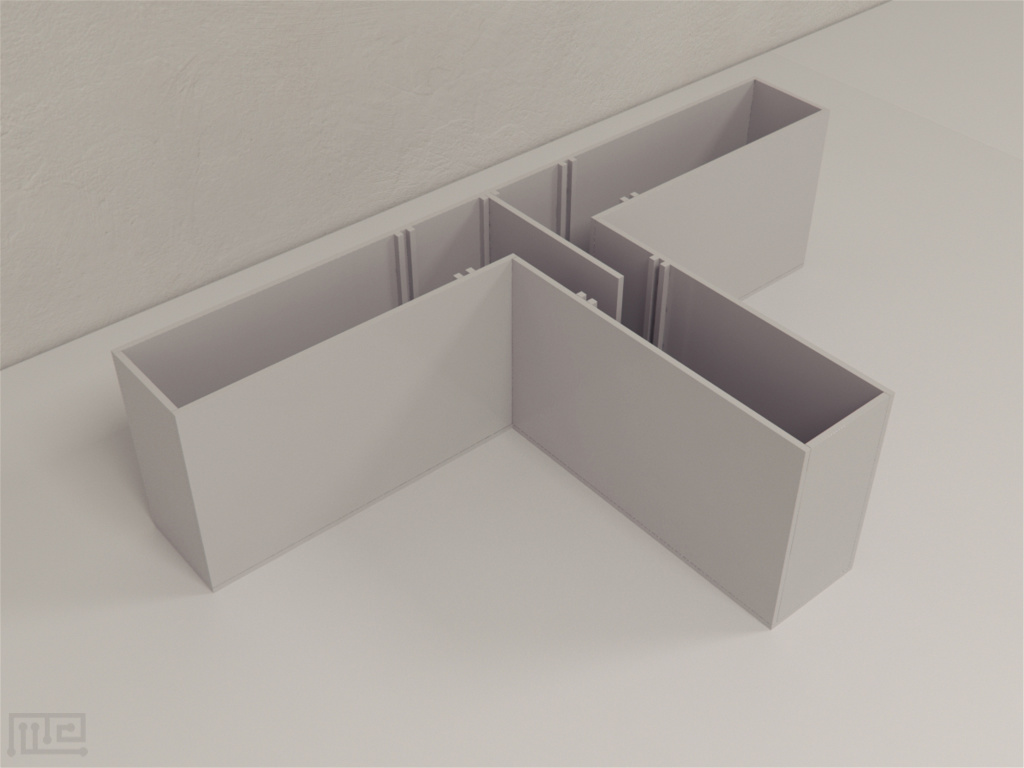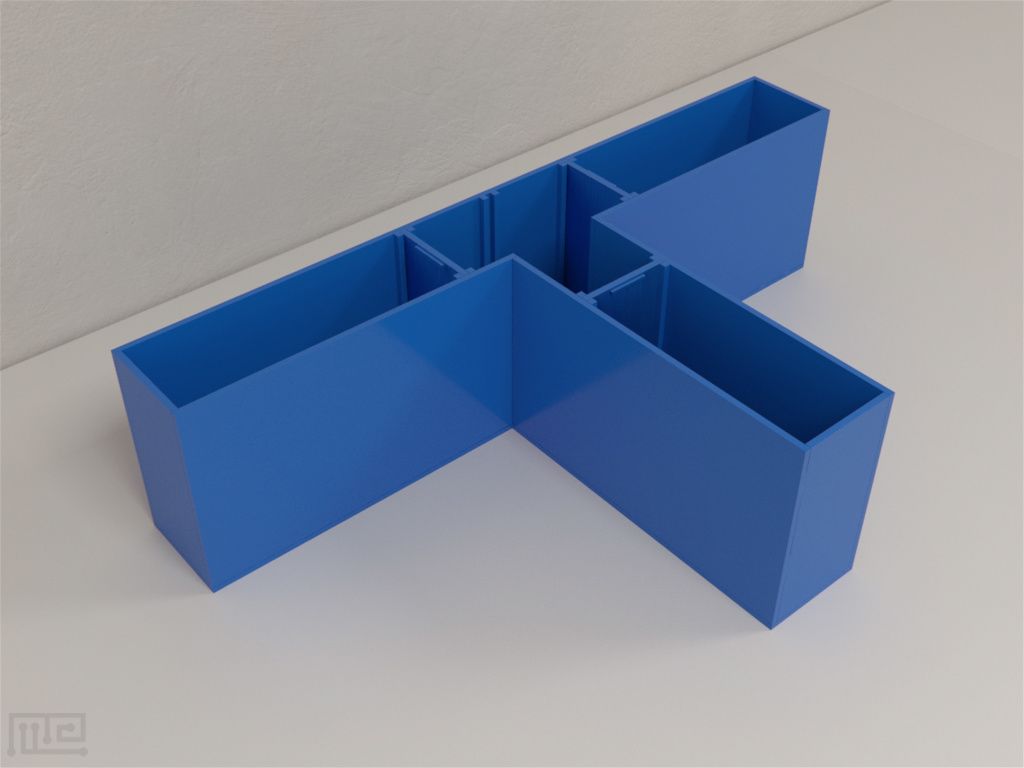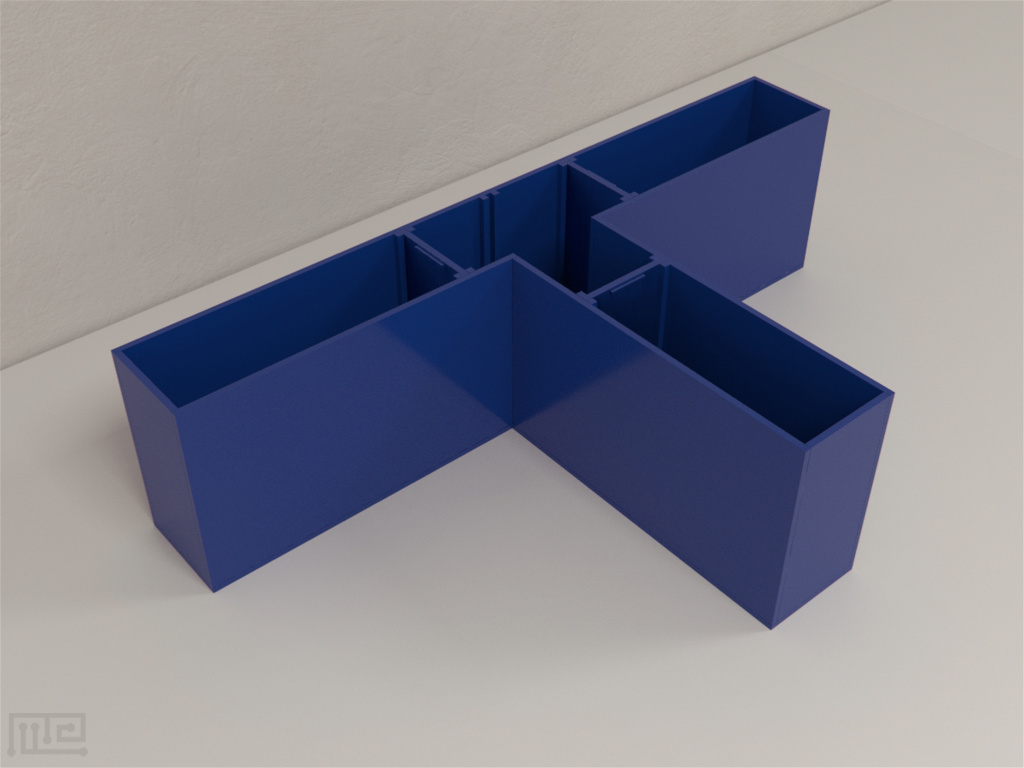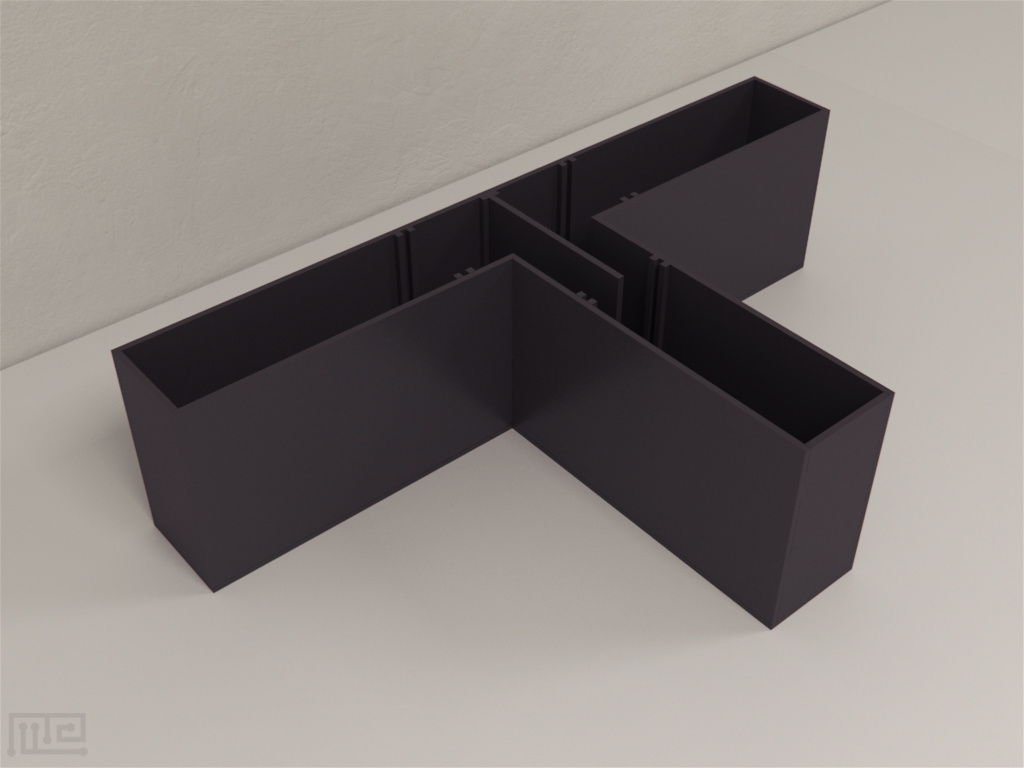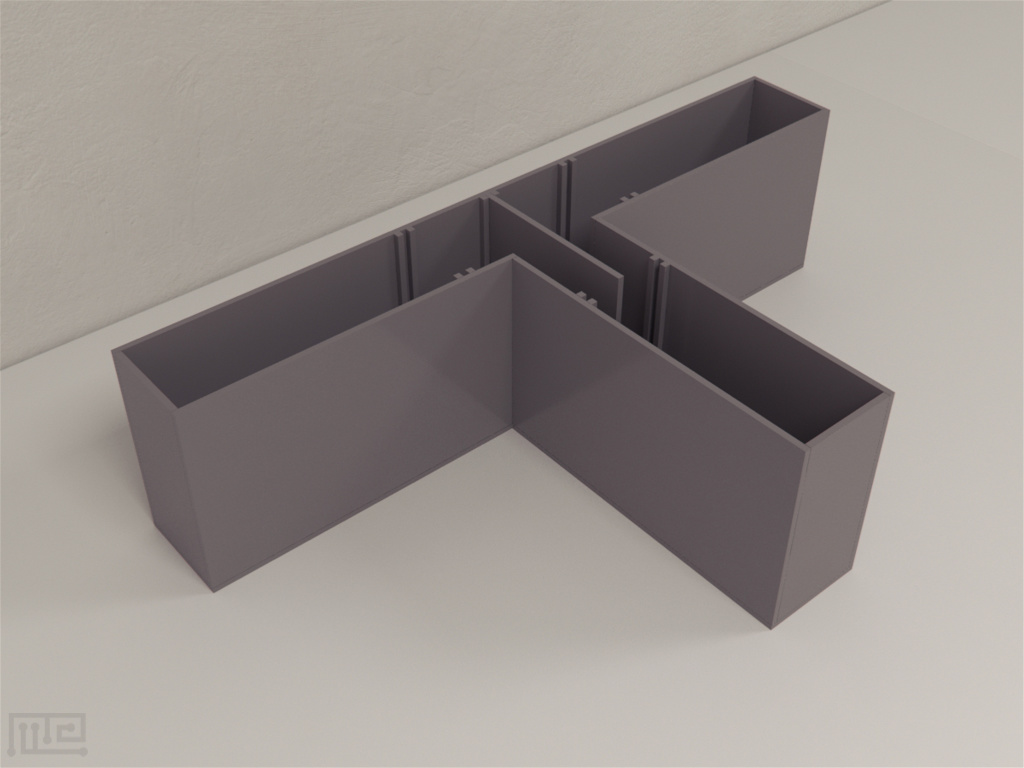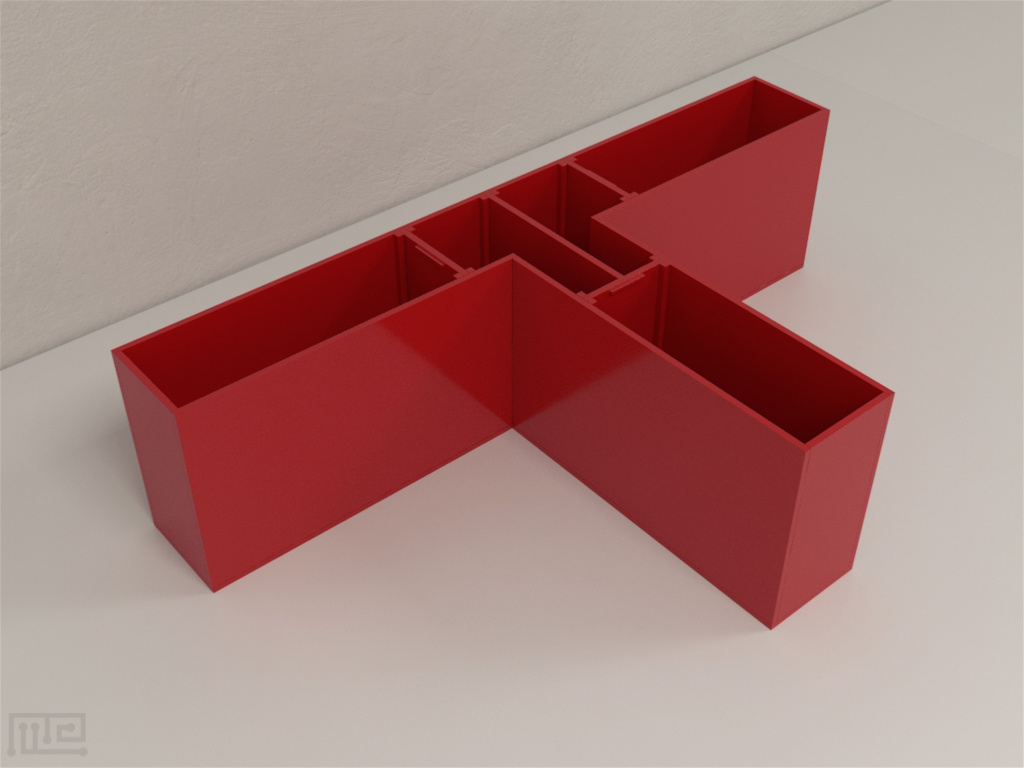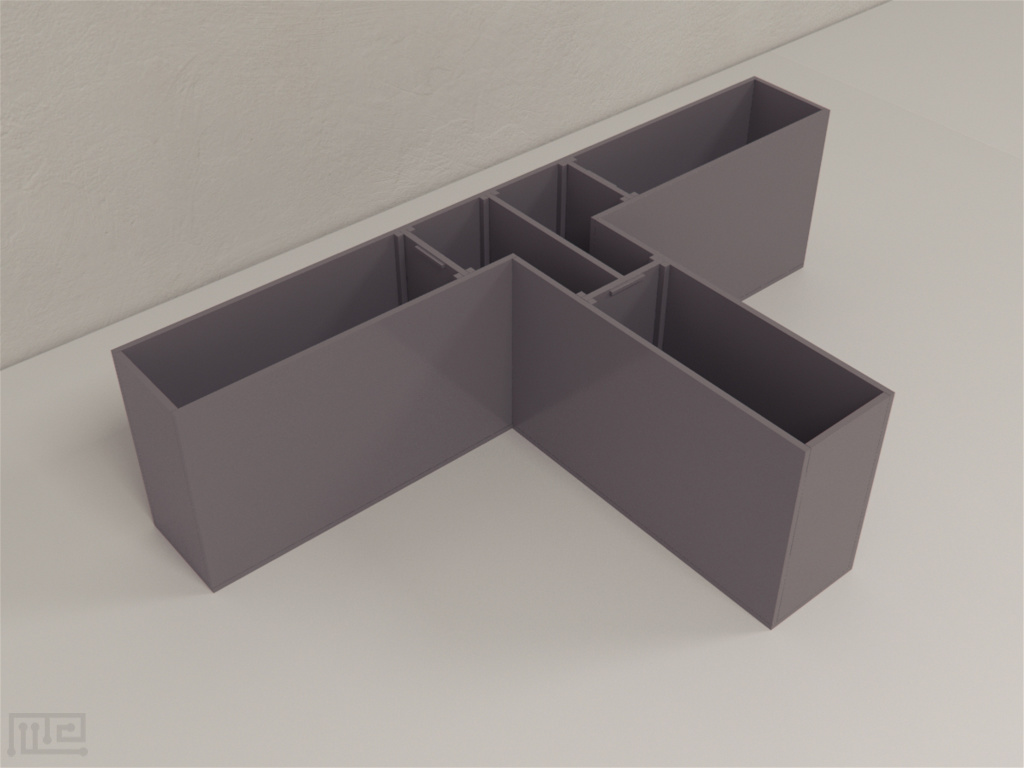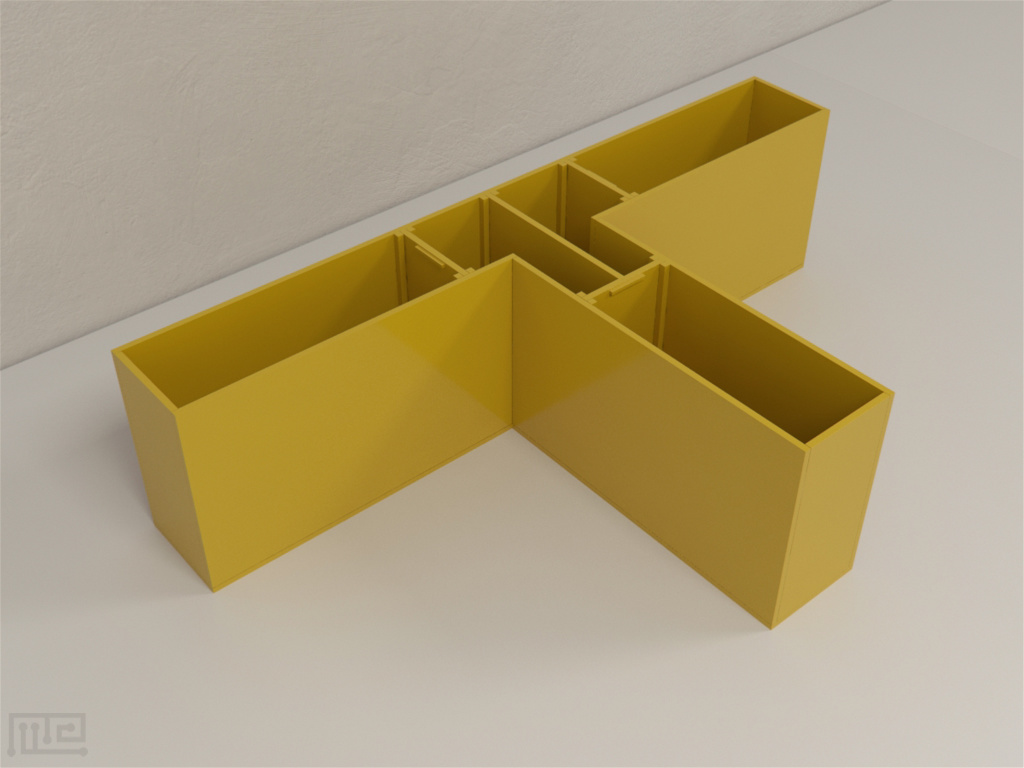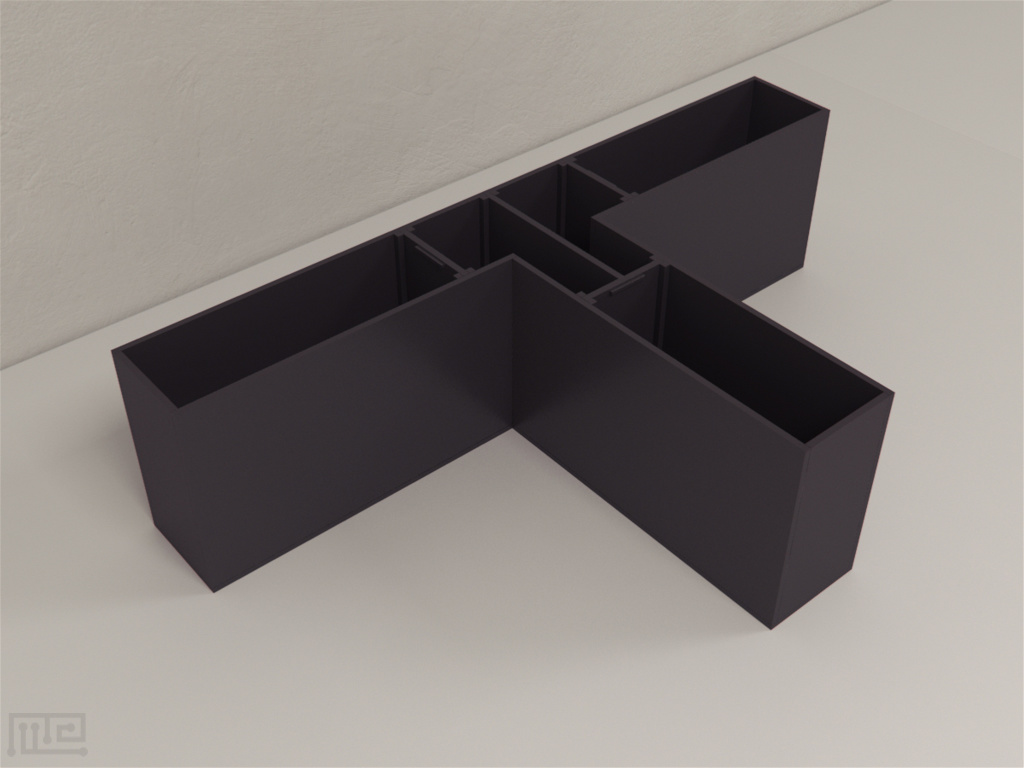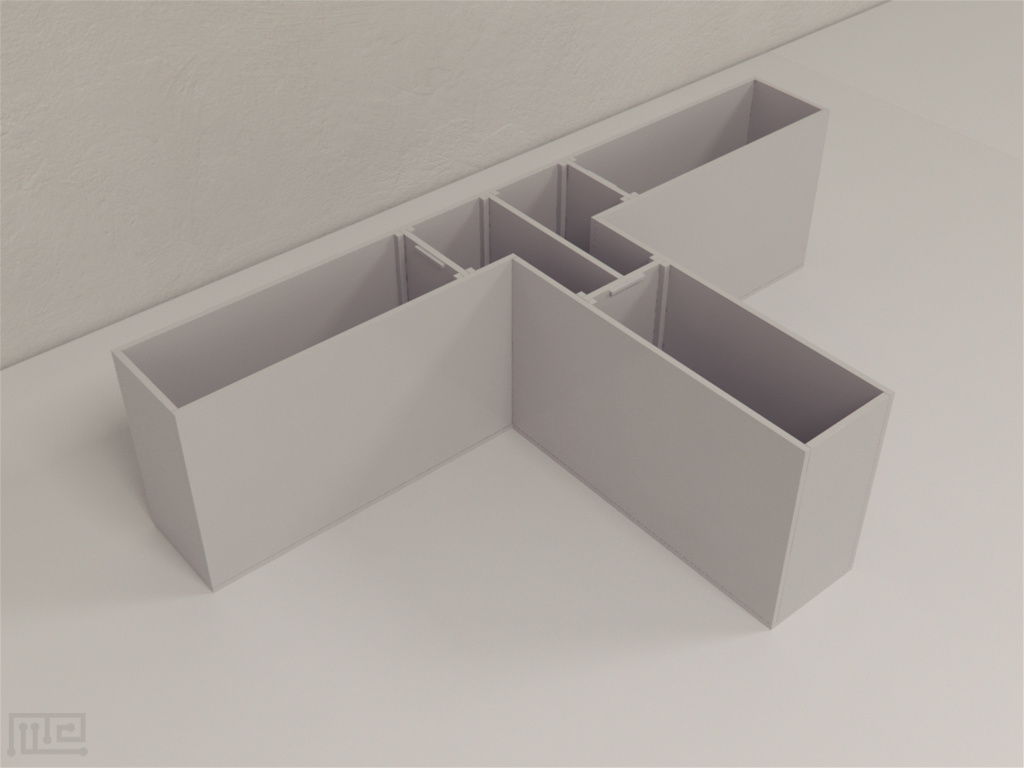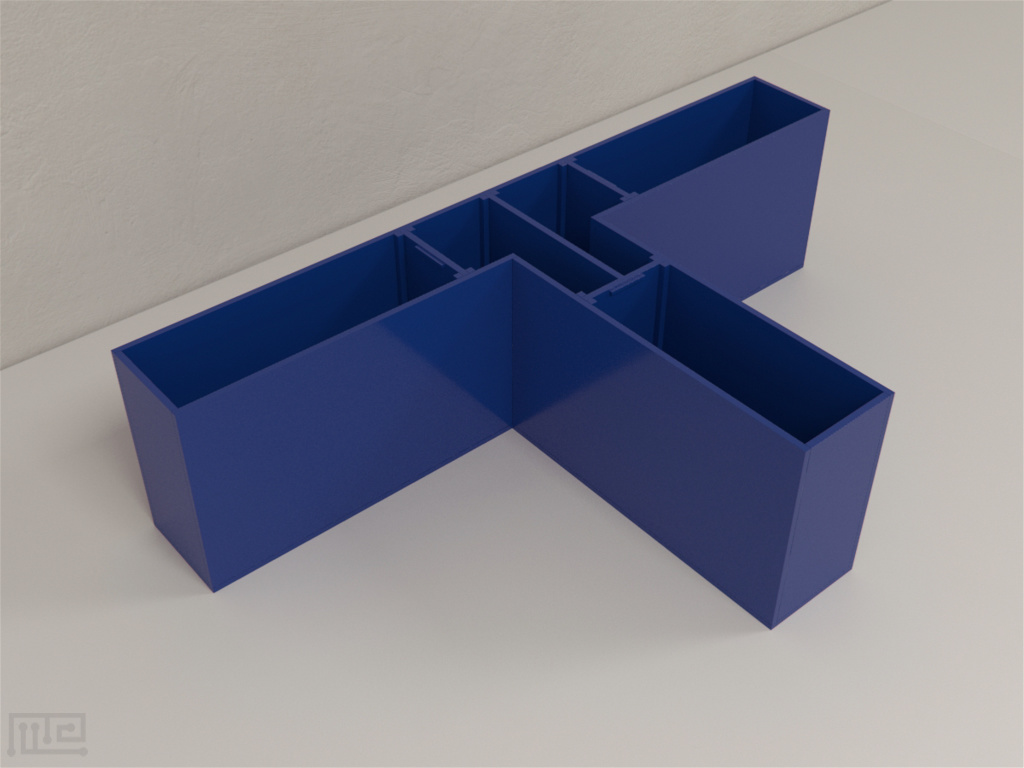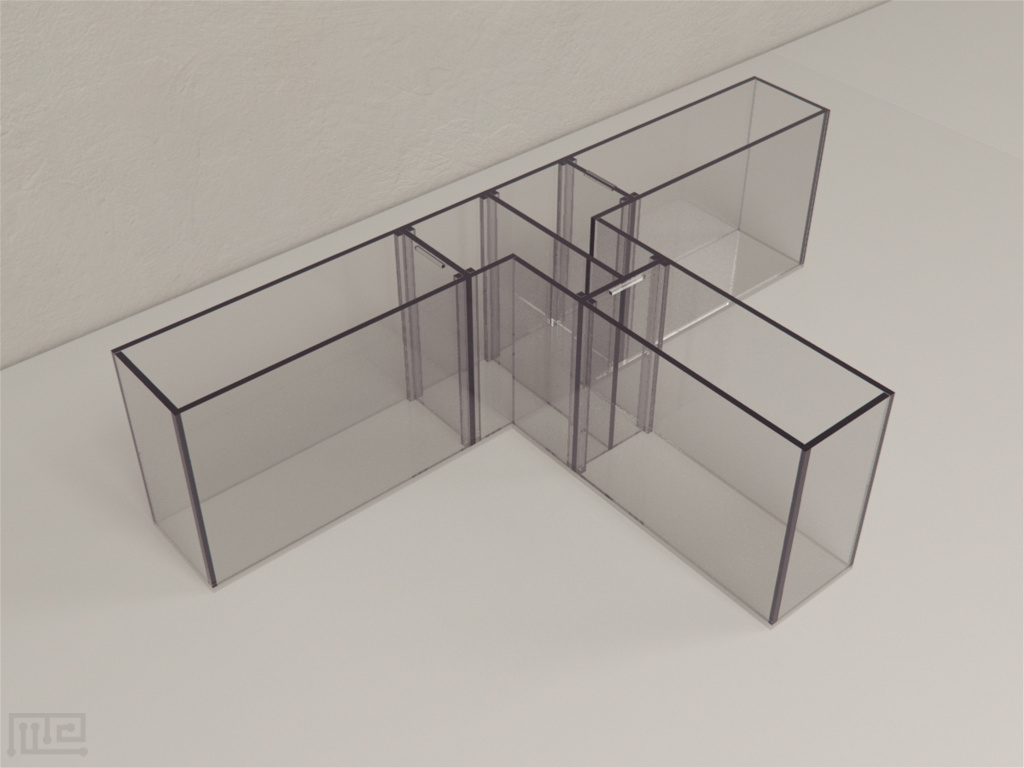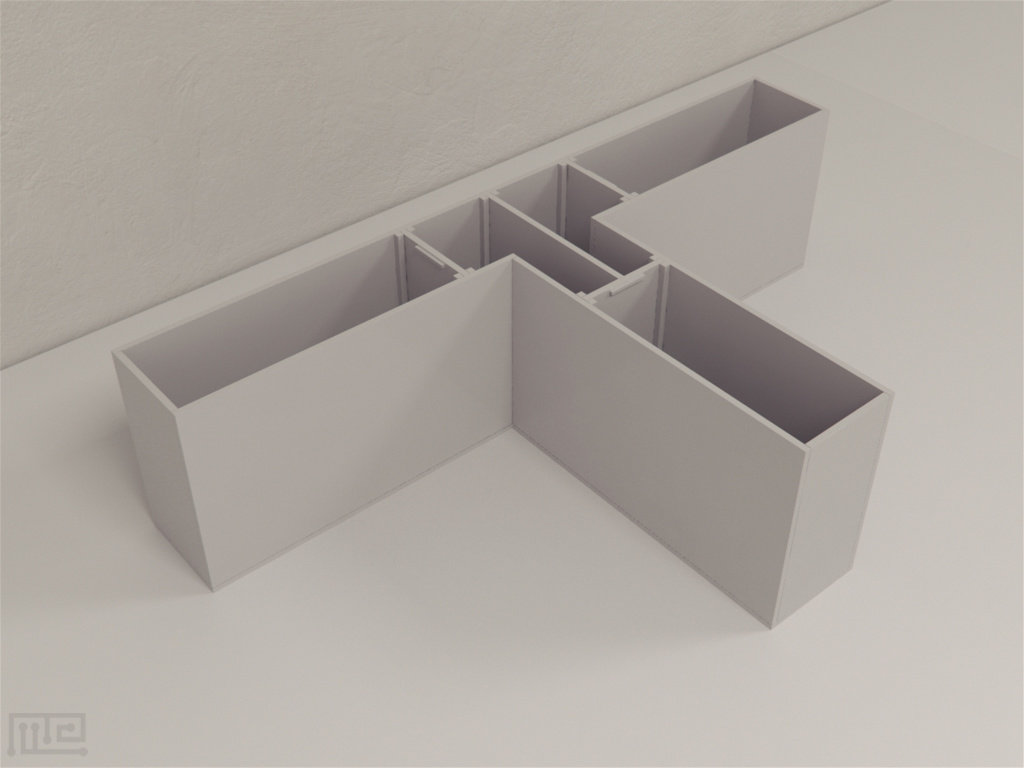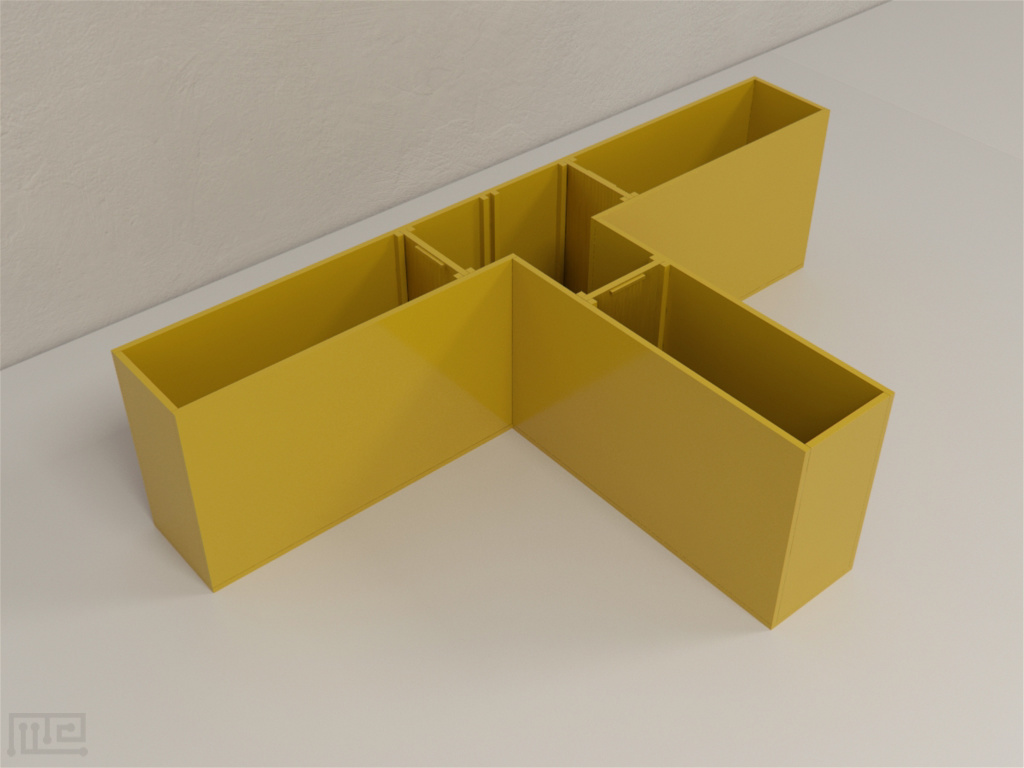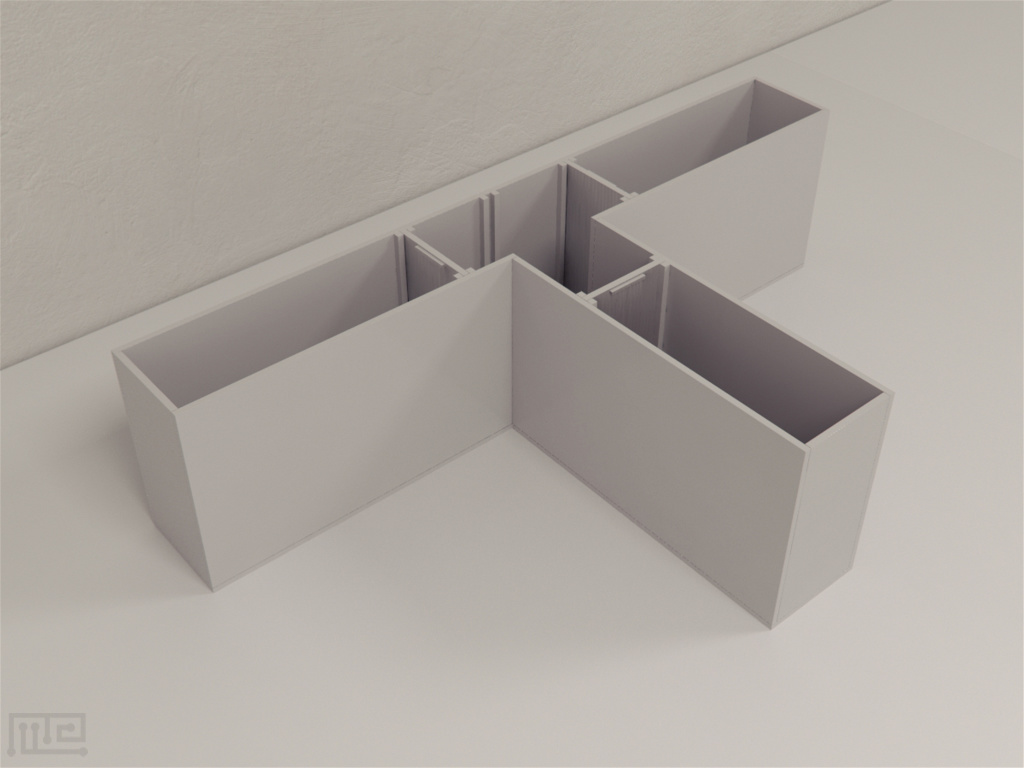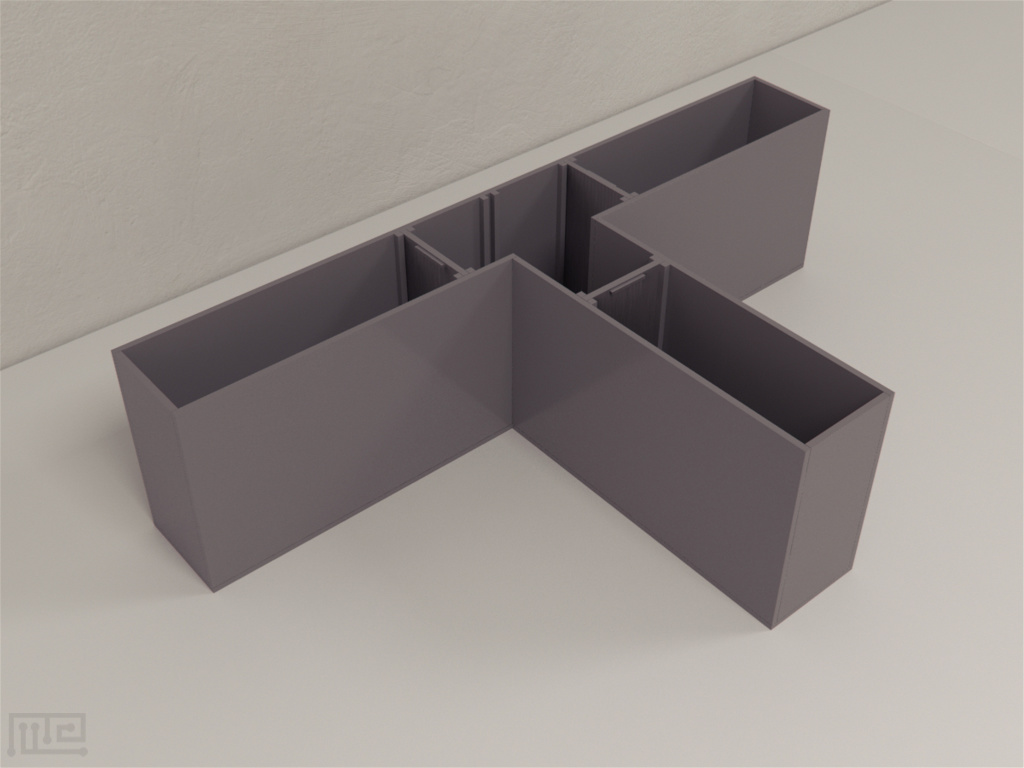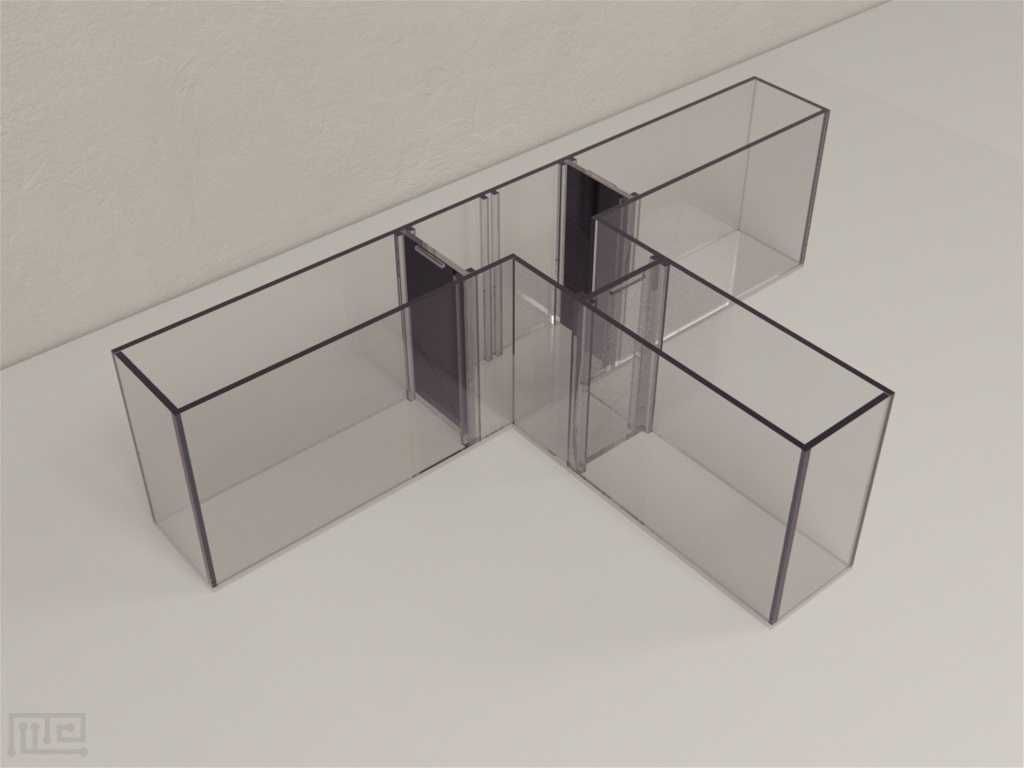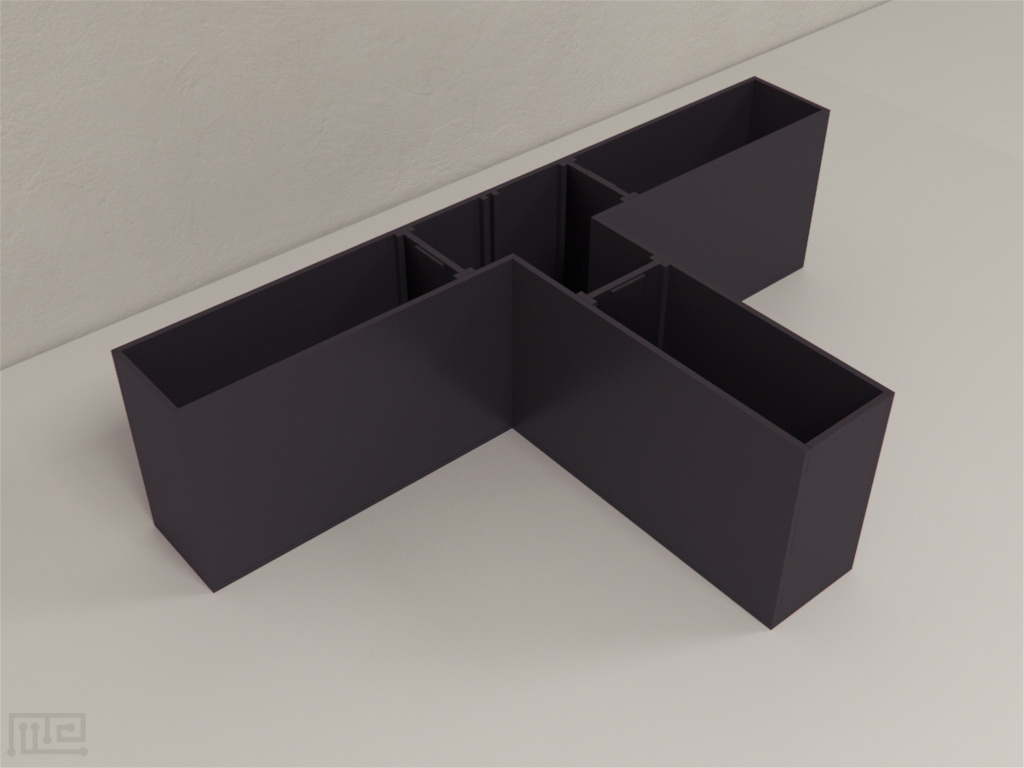Product Description
The T-maze is a behavioral test used to assess spatial learning and memory in small animals such as rats and mice. The T-maze consists of a starting arm and two goal arms, arranged in the shape of a “T” and it is usually made of acrylic material. The goal arms can be baited with food or other rewards.
The test is typically conducted by placing the animal at the start of the T-maze and allowing it to explore the maze. The animal’s movements are then tracked, and different measures such as the number of arm entries, the time spent in each arm, and the number of errors made can be used to assess the animal’s spatial learning and memory abilities. The test can also be used to measure working memory by switching the location of the reward in the goal arms.
The T-maze test is a simple way to assess spatial learning and memory in rodents and has been widely used in neuroscience research. It is also used to study the effects of therapeutics or other manipulations on spatial learning and memory.
The Y-maze is a variant of the T-maze.
Maze Engineers offers the T Maze. Customizations available upon request.
Mouse (Small)
$ 1190
one maze-
- Length Across T: 66 cm
- Stem length 30cm
- Arm length 30cm
- Width 6cm
- Without central partition, width is 6cm
- With central partition, width is 10cm
- Wall height 20cm
- Acrylic
- No Odors
- Easy clean with 70% Ethanol
- Ideal for Stroke/Motor Lesions
Mouse
$ 1290
one maze-
- Length Across T: 70 cm
- Stem length 30 cm
- Arm length 30 cm
- Width 10cm
- Wall height 20cm
- With central partition option, please notify
- Acrylic
- No Odors
- Easy clean with 70% Ethanol
Rat
$ 1790
one maze-
- Length Across T: 110 cm
- Stem length 50 cm
- Arm length 50 cm
- Width 10cm
- Wall height 30cm
- With central partition option, please notify
- Acrylic
- No Odors
- Easy clean with 70% Ethanol
Modifications
Food Wells
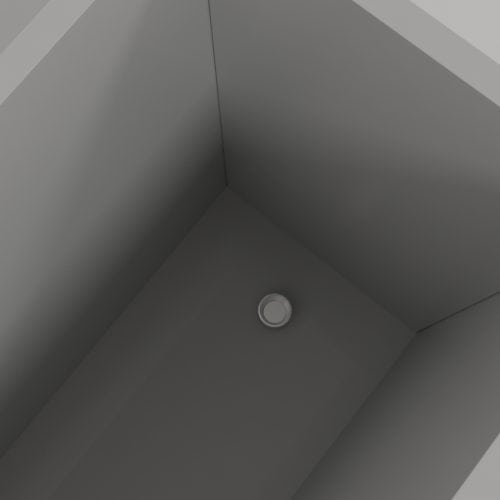
Dimensions: approx 1cm with lid
Cost: $100
Doors/Divider
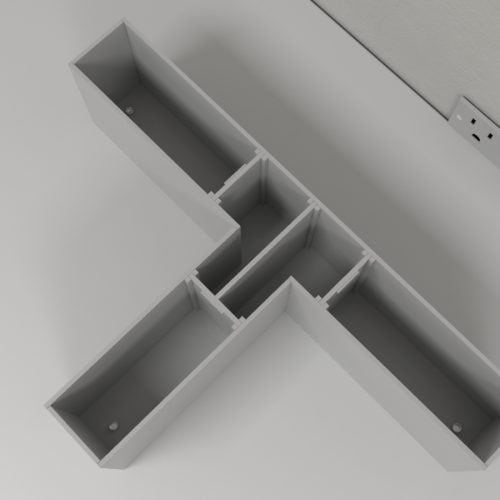
Cost: $100
Light Cues
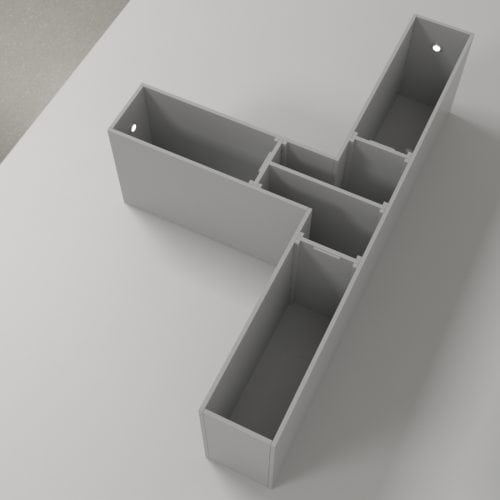
Backlights
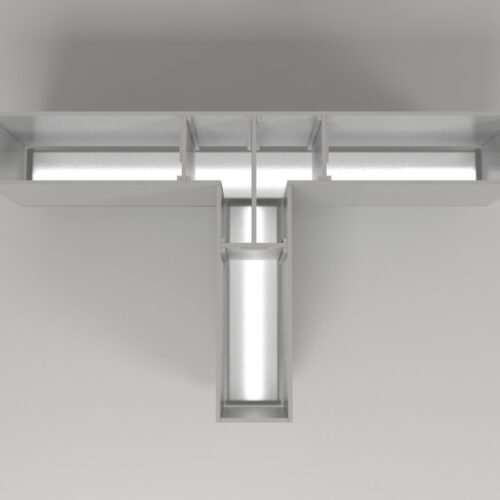
Requires small adjustments for size.
Types available: White, Blue, IR, Red
Stand
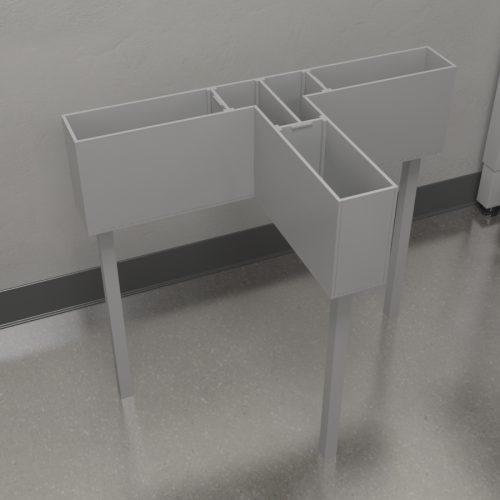
$200 for Rat stand (45 cm height).
H Maze
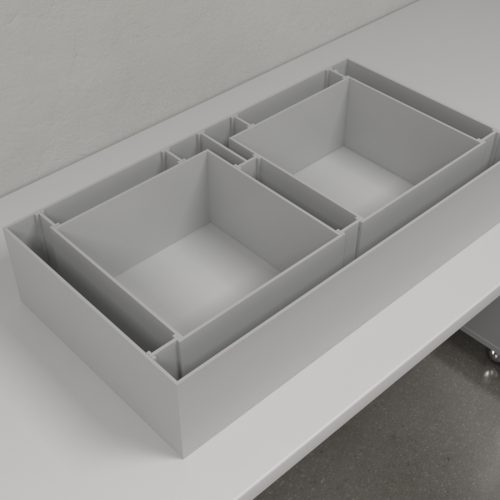
T maze used for return to start experiments, used in experiments that require many recurrent trials and minimizes experimenter grasping of rodents. Made to fit your T maze.
Escape Tubes
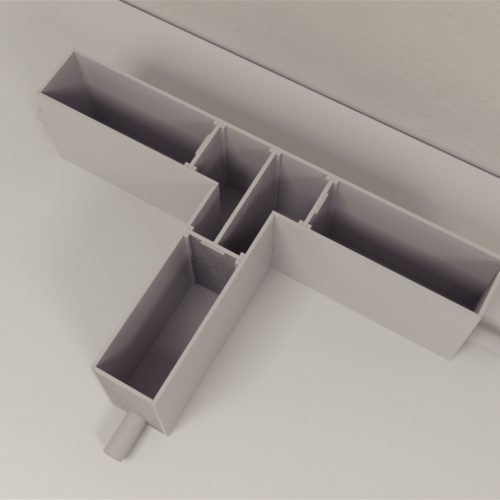
Rat (8cm diameter): $400
Housing
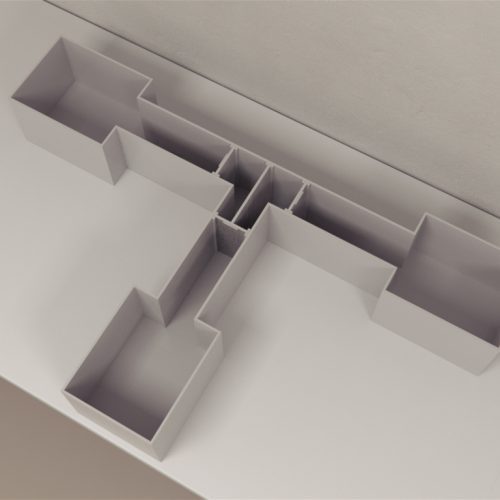
$250 per housing
Variants

The T-Maze has been widely used in neuroscience for studies of spatial learning and memory. The task is based on the explorative nature of rodents to locate food quickly and efficiently. The basic model of the maze provides the subject with two options: left arm and right arm. The natural tendency of the rodent would be to explore the un-visited arm after retrieving food reward from one of the arms. Typically left-right discrimination and forced alternation tasks are used to assess reference and working memory using the T-Maze. Alternation task, both rewarded and spontaneous, has been shown to be effective in detecting hippocampal dysfunction and lesions.
In the late 1950s, Dember and Fowler were the first to study alternation behavior in animals and published papers for the same. It has since been widely used to measure spatial memory and learning. The T-Maze serves as a simple test to assess hippocampal learning and detection of cognitive dysfunction, and due to its simple construction and usability, it has been used extensively to study compounds that affect spatial memory and age-related cognitive decline (Sharma et al.,2010). While rewarded alternation requires food rewards and takes fewer trials, spontaneous alternation does not require food rationing and can be interleaved with other tests.
The basic T-Maze consists of just two goal arms and a base arm forming a ‘T.’ The simplest modification to the T-Maze can be done using guillotine doors that can be automated or manually operated. Other versions of the T-Maze include the Y-Maze wherein the arms form a ‘Y’, the continuous angled T-Maze that has the choice arms angled and return to the base arm, H Maze conversion of the maze to minimize experimenter grasping of the subjects in recurrent trials, and multiple T-Maze as used by Tolman and Honzik in 1930 to investigate latent learning. The maze can also be adapted for research in aquatic environments.
History
Origin
In 1946, Tolman utilized a combination T-Maze to investigate place learning and reference learning in rats. He hypothesized that animal learning included purpose and cognition (Tolman et al.,1925). His experiment suggested that the learned behavior in the T-Maze was a disposition to orient or to go towards the location of the goal.
Kendler in 1947, conducted an investigation of latent learning in a simple T-Maze as an improvement on the experiment carried out by Spence and Lippitt (1946). The experiment also examined the adequacy of Tolman’s non-reinforcement learning theory (Tolman, 1932). Kendler’s experiment concluded that motivational satisfaction indeed played a major role in learning as observed in the choices made by the subjects in the trials, which were in contrast to the expected results deduced from Tolman’s theory.
The late 1950s saw Dember and Fowler investigate alternation behavior in animals in a two-choice situation. Their published papers (Dember and Fowler 1959, Fowler et al.,1959a, Fowler et al.,1959b) described spontaneous versus forced alternation behavior and the influence of rewards and reinforcements.
Developments
Since the research conducted by Dember and Fowler, the T-Maze has been developed as a relatively simple and widely used task in measuring spatial memory and its many variations.
In 1979, Thomas carried out experiments using a T-Maze to study the effect of small posterodorsal septum lesions on alternation behavior of rats. The trials compared the performance of spontaneous and rerun correction alternation in rats with small posterodorsal septal lesions and found that the lesions not just reduce alternation to the randomness of choice but, plausibly, turn the subject (on average) from alternators to preservators.
The effects of fornix fimbria lesions, medial septal lesions, and lateral septal lesions were tested with rats trained on a rewarded alternation task, run as a spatial working memory task on an elevated T-Maze by Rawlins and Olton in 1982. They concluded that rats have difficulty in using information about ‘places,’ and that control and lesion rats learn the tasks in the same way.
Recent Developments
Due to its ability to readily test the function of hippocampal learning, the T-Maze has been used extensively to study treatments that affect spatial memory and age-related cognitive decline (Sharma et al.,2010).
The T-Maze has also been adapted for research in aquatic life; Aquatic T-Maze. Zheng et al. analyzed the effect of vasous compounds on the learning and memory abilities of male zebrafish. Another study assessed T-Maze turn preferences in the Port Jackson sharks to examine laterality during exploration of a novel habitat (Byrnes et al.,2017). Miletto et al., 2017) used male and female guppy fish in the aquatic T-Maze model to investigate the difference in cognitive flexibility of the sexes in a discrimination reversal learning task and concluded that although the meta-analysis supported the hypothesis of females having greater reversal learning ability this difference could, however, be dependent on the task that they are subjected to.
Ichinose and Tanimoto (2016) further developed and adapted T-Maze for Drosophila into a multiplex T-Maze to study the dynamics of memory-guided choice behavior. This new system allowed them to demonstrate that specific neurons control the speed and the eventual result of the conditioned odor approach.
Apparatus & Equipment
The apparatus is a capital ‘T’ shaped maze with arm lengths ranging from 30 to 50 cm having a width of approximately 10 cm to accommodate mice, rats, and small primates. Generally, the goal arms of the maze are equipped with guillotine doors that can be automated or manually managed to confine the subject within the arm or to block off one of the arms. The goal arms may have food wells or have goal boxes attached to them to hold rewards or stimuli. The maze is usually used as an enclosed maze with wall heights of 30 cm, and the apparatus is typically raised to a height of at least 50 cm above the floor.
The apparatus is usually painted a dark color to avoid unnecessary anxiety in the subjects. The T-Maze construction is usually adapted depending on the subject used for example the transparent miniature T-Maze used in studies of memory and cognition in Drosophila (Lin et al.,2017, Ichinose & Tanimoto 2016) and fish tank model used for experiments involving fish (Zheng et al.,2017, Miletto et al.,2017).
Automated T-Maze can detect the location of the subject within the maze and control the opening and closing of the arm doors as a trigger response. The automated maze is also capable of detecting food rewards.
To avoid shadows in the maze, the T-Maze should be well lit from above. Proper lighting also ensures that the subject is able to see the food rewards. Tracking software and video camera, such as Noldus Ethovision XT, mounted above the maze assist with live scoring and tracking and recording the subject and its movements within the maze. The apparatus must be cleaned thoroughly before and after each trial to limit influence from any residual stimuli from previous trials.
Training Protocol
The T-Maze task involves observation of the ability of the subject to remember the previously visited arm. The task takes advantage of the natural explorative nature of rodents and the idea that they tend to use an optimal search strategy to obtain food with minimal effort.
The performance in the task weakens or decreases for subjects with hippocampal lesions or damage as seen in neurodegenerative or neuropsychiatric diseases or as a result of natural aging.
Several protocols exist to be used with the T-Maze, though the two most commonly used protocols are the Rewarded Alternation task and Spontaneous Alternation task. For the Rewarded alternation task, the experimenter decides which arm is the “correct choice” whereas the Spontaneous Alternation task uses the subject’s natural explorative drive and allows it to choose which arm to explore first. Spontaneous alternation task has been shown to be more successful in the assessment of subjects with hippocampal lesions as these animals tend to develop a side preference (Deacon and Rawlins 2006). The task is also used to quantify cognitive deficits in transgenic strains of mice and evaluate effects of treatments on cognition.
Another protocol used with the T-Maze is the Delayed Alternation task. The Delayed Alternation task allows assessing spatial working memory by first allowing the subject to explore a baited arm of its choice and removing the subject once the choice is made and limiting it to the start box of the base arm using a door. This trial is followed by a formal trial, after a predetermined delay between the two trials, wherein the subject is reintroduced to the maze by opening the start arm door and is expected to choose the arm that it did not choose in the previous trial.
The T-Maze can be modified to allow disassociation between working and reference memory. This protocol is accomplished by changing external cues and splitting the stem arm lengthwise using an opaque divider. The end of one of the paths created by the divider is blocked using a clear Plexiglas. If the subject chooses the unblocked path, the protocol is the same as that of an Alternation task. (Wenk 2001)
Pre-training for the T-Maze
Rodents tend to be wary of eating anything new. Thus it is important to familiarize the subject with the food rewards used, before the testing, within a familiar environment (housing cage). Food rewards can be solid (such as sweetened breakfast cereal) or liquid (such as chocolate milk.) Generally, liquid rewards are used in case of testing as some treatments may make eating solid food an unpleasant experience for the subject. Subjects are usually maintained at about 85 to 95% of their free-feeding weight throughout the training and testing phases.
For the food-deprived task, the food-scavenging behavior is encouraged by depriving the subject of food the night prior to the testing. Subjects may be familiarized to the maze in pairs (usually cage-mates) to reduce the anxiety in a novel space during the initial phase of exploration. The acclimation is usually done individually, although, this may require more time than paired familiarization. The maze is scattered with food rewards, and the subject is placed in the start arm and allowed to explore the maze freely. The food rewards are replaced on consumption. The familiarization procedure is repeated four times with at least ten minutes between each exposure. The acclimation period usually lasts 1 to 2 days. Next, one of the arms is blocked, and the open goal arm is baited with a food reward. During this forced trial the subject is placed in the start arm and forced to visit the open arm. This trial is repeated by randomly varying the closed arm, for an equal number of trials for each arm, until the subject has been familiarized with the task.
Evaluation of Spatial Memory using Rewarded Alternation in the T-Maze
The choice trial begins by baiting both the arms and allowing the subject to visit only one arm and consume the food reward. This procedure is done by pre-selecting the correct choice and blocking it with a door. Now the unvisited arm becomes the correct choice in the next trial. For the immediate trial both the arms are open and only the correct choice arm is baited. The subject is expected to visit the correct choice arm. If it makes the right choice, it is allowed to consume the food reward, and if it chooses the wrong arm, it is allowed to see that the food well is empty and then it is removed from the maze.
Each trial lasts approximately for 2 minutes. The procedure is repeated for each of the animals on a ten trial per day basis for up to twelve testing days. The “correct choice” arm is randomly varied throughout the testing sessions.
Evaluation of Spatial Learning using Spontaneous Alternation in the T-Maze
The Spontaneous Alternation task is based on the novelty of the maze. Thus the task is performed without prior familiarization of the subjects to the maze. The subject is given a free choice, during the trial, to choose either one of the baited arms unlike in the Rewarded Alternation task where one of the arms is blocked. Once the subject has made its choice, it is confined to that goal arm by closing the respective door for 30 seconds. The subject is removed from the goal arm after it has consumed the food reward and the doors in the maze are opened. The subject is then once again placed in the start arm and is expected to alternate its choice from its previous selection. If the subject visits the unvisited arm, it is allowed to consume the food reward or else, in case it visits the already visited arm it is allowed to see that the food well is empty before it is removed from the maze.
Each trial lasts no longer than 2 minutes, and the procedure is repeated for each of the animals on a ten trial per day basis for up to twelve testing days.
Modifications
Advancements in cognitive neuroscience research have led to the development of many variations of T-Maze to study particular aspects of spatial learning and alternation behavior.
One of the easiest ways to bring variation in the T-Maze is by using discriminative stimuli such as patterns or objects to which the subject must respond to, to obtain a reward. Another simple possible variation would be to train the subjects to select the white painted arm instead of the black painted arm that it would usually prefer instinctively. By training the subject to always choose the white painted arm, regardless of it being the left or the right arm, testing the reference memory of the subject is possible (Deacon and Rawlins 2006).
The use of guillotine doors can also serve as a critical feature in the maze. Using a guillotine door in the start arm to create a confined start area helps assist in Delayed Alternation task and also to prevent the rat from exploring the maze between choice trials (Wenk 2001). Further, the start arm can be modified by dividing it lengthwise with an opaque divider that blocks off one of the two pathways created from the division to investigate the reference memory of the subject (Wenk 2001).
Anxiety-related tasks are often carried out using an elevated T-Maze. These tasks usually employ a T-Maze with no walls, forcing the subject into a state of anxiety thus placing more stress on them as they naturally tend to avoid open spaces. A variation of this model used a T-Maze that had the start arm enclosed with lateral walls while the goal arms remained un-walled (Graeff et al.,1998).
Water-based T-Maze models combine the advantages of Morris Water Maze and the T-Maze while minimizing the disadvantages associated with the individual mazes. The Water T-Maze uses a T-shaped tank filled with water with either one of the arms installed with an escape platform or ladder. Locchi et al. used a water escape T-Maze model to assess the sensitivity of spatial memory in response to pharmacological manipulations and suggested that the Water T-Maze served as a valid method of investigation. On the other hand, Guariglia et al. used a Water T-Maze as a simple and inexpensive task for assessing repetitive behaviors in mice which other conventional methods, such as the Morris Water Maze, could not conclusively demonstrate.
The multiple T-Maze makes use of many simple T-Mazes joined together to create a complex, multi-choice maze with identical choice points to determine place vs. response learning and cognitive maps. This complex maze was used by Tolman and Honzink (1930) to put into perspective their theory that rats actively process information rather than operating on a stimulus-response relationship.
Aquatic T-Mazes have also been used in research of effects of compounds on memory and learning related tasks and cognitive flexibility in fish (Zheng et al.,2017, Byrnes et al.,2017, Miletto et al.,2017). Vertical T-Mazes have also been used as an adapted version of the classical T-Maze in studies of arthropods (Stelinski and Tiwari 2013). This adaptation takes advantage of the natural tendency of many arthropods towards positive phototaxis and negative geotaxis.
Another version of the T-Maze is the continuous angled T-Maze that has often been used in Grid cell experiments. The goal arms of the continuous maze angle back to the start. This modification limits the interference of the experimenter in moving the subject from the goal arms to the start position. The Two Problem T-Maze is yet another adaptation of the T-Maze. This maze is usually used in the examination of the effects of prelimbic lesions in the rat prefrontal cortex to determine how it affects working memory through assessing the acquisition and retention of nonmatching to sample (NMTS) and matching to sample tasks (MTS).
Many species-based adaptations of the T-Maze exists to serve as a tool for assessment of spatial working memory and cognitive abilities. The ease of construction and the simplicity of the apparatus make it one of the popular behavioral assays.
Data Analysis
The data obtained from the T-Maze is generally very straightforward and consists of the number of correct (the subject enters the opposite arm on the second run) vs. incorrect (the animal enters the same arm previously entered on the previous run) arm entries in each trial. Working memory and reference memory data can be obtained from the number of entries into the blocked side of the stem and number of re-entries into the un-baited arm (Wenk 2001). Data can also be collected for the latencies to explore and retrieval of the rewards, time spent in the goal arms and so on.
As the subject learns that entering into a new arm results in food reward the number of incorrect entries should decrease. Subjects with hippocampal lesions or damage are likely to make errors. The percentages of correct arm choices can be graphed and compared across a sham control group and a disease model/intervention group. Graphs allow easy visualization of effects on spatial memory and learning between different disease or treatment groups. Animals as disease models of neurodegenerative disorders, for example, should show a much slower learning curve with more incorrect choices, even after several trials. Generally, animal cohorts of 10-30 animals are sufficient to obtain p-values of <0.05 using ANOVA (Jang et al.,2013, Wang et al.,2014).
Strengths and Limitations
In comparison to other tasks used in assessing spatial learning and memory, the T-Maze is a simple apparatus that is easy to construct and use. Simple modifications such as using guillotine doors on the arms allow the task to be adapted for the Delayed Alternation task while joining together multiple T-Mazes creates a complicated version of the rather simple T-Maze. Generally, an enclosed T-Maze is used which places minimal stress on the subjects, although elevated and un-walled T-Mazes are also used especially in studies related to anxiety (Graeff et al.,1998). Researchers have also used a water T-Maze which combines the advantages of the simple T-Maze and the Morris Water Maze (Locchi et al.,2007, Guariglia et al.,2013).
The absence of significant stressors in the simple T-Maze coupled with familiarization with the maze prior to testing allow for better observations of working memory in the animals as they perform in the maze.
Despite the simplicity, the T-Maze has its own limitations. A simple T-Maze is a single-point two-choice maze thus it has a higher rate of success possibility as the probability of the subject choosing the correct arm is by default 50%. The subjects may also use strategies other than spatial learning based on the spatial and non-spatial cues. Odor trails too may affect the quality of research if olfactory cues are not an intended part of the investigation.
For the task to deliver appropriate results, the subject’s exploratory drive must be maintained throughout. Extensive handling and overtraining of the subjects may place undue stress on them, affecting their performance on the maze. It is also important to maintain minimum variability in the amount of reward used during the training and testing lest the subject should suffer from ‘contrast effects’ wherein its motivation decreases due to receiving less than expected reward (Deacon & Rawlins 2006). In case of T-Mazes that make use of guillotine doors, it is essential that doors are closed carefully and not dropped too close to the subject to avoid startling it as this experience may be stressful for the subject and cause it to avoid that arm in subsequent trials.
As with all mazes that measure aspects of learning and memory, it is important to remember that many different processes may come into play to form behavior. In many cases, the T-Maze is used in conjunction with other mazes to study disease models or transgenic animals and gain a fuller understanding of spatial learning and memory.
Summary
- The T-Maze is a simple single-point two-choice maze.
- The task exploits the innate explorative nature of rodents and subjects them to tasks that require them to alternate between the goal arms to retrieve food rewards.
- Commonly used protocols with the T-maze are Forced Alternation task and Spontaneous Alternation task.
- The T-Maze can be easily adapted to investigate the different aspects of spatial learning and for different subjects.
- By using guillotine doors, the T-Maze can be easily adapted for Delayed Alternation protocol.
- The T-Maze has been extensively used in the study of hippocampal functions, age-related cognitive decline, and anxiety.
- The T-Maze is also utilized in understanding the effects of treatments in understanding underlying pathology of diseases on spatial learning and memory.
- Subjects of the diseased model show a much slower learning curve in comparison to the control group in T-Maze tasks.
Request a quote
"*" indicates required fields

